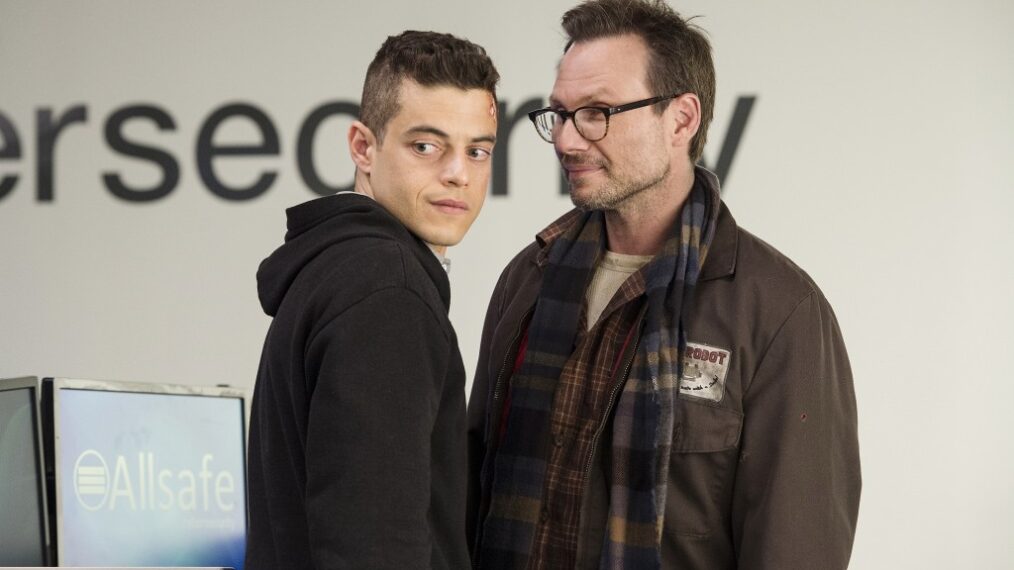How ‘Mr. Robot’ Gets Its Hacks Right

Mr. Robot is self-aware: It’s a TV show in which members of a hacker group called F Society use downtime (during their scheme to destroy an evil corporation referred to as Evil Corp) to … sit around a TV and deride the misrepresentation of hacking in popular media.
They even acknowledge the occasional implausibility of their own storylines. Last week, when Elliot (Rami Malek) was tasked by a group of drug dealers with infiltrating a prison network in a matter of hours, he pointed out the real-world limitations of hacking to the audience, even as he prepared to surpass them.
“Yes, it is possible to hack into a prison’s network,” Elliot inner-monologued to his imaginary friend. “Most of them use regular industrial control systems. When you have control of that, you basically have control of the cell doors. But what these morons don’t know is, it’s almost impossible without any research.”
Series technical advisors Kor Adana and Michael Bazzell help ensure that Mr. Robot’s storylines stay on the right side of the line between science and fiction as the series straddles that divide with its feats of technological mastery. According to Adana, to have a chance at hacking a prison as Elliot did would probably take weeks or even months of research. But every case depicted on the show is based on real-life hacking precedents.
“I think we have a pretty brilliant protagonist, who is amazing at coding and amazing at identifying vulnerabilities and doing that research in a very quick way,” Adana says. “So I think that everything that we do is grounded in reality; however, I think we only kind of fudge the timing a little bit.”
Until about three years ago, Adana worked as a network security analyst and computer forensics expert at the corporate headquarters of a large automotive corporation. For five years after college, Adana worked in the type of office environment Elliot puts up with.
“I did a lot of security consulting, penetration testing, basically like white hat hacking,” Adana says. “I felt like I was working for a corporation similar to Evil Corp, so when I first read the pilot for Mr. Robot, I kind of related to Elliot in that sense.”
The technical advisers are involved throughout the creative process, from breaking stories in the writers’ room to ensuring visual accuracy during shooting and production. Sometimes they’re finding the appropriate tech practices to fill in a plot point (as was the case with the prison hack storyline) and sometimes they’re suggesting tech tools and tricks the writers could build a story around (such as the Raspberry Pi used in the Steel Mountain data facility hack.)
The real challenge, Adana says, comes during production. “It was so easy for me to see how cheesy hacking shows get made,” Adana says. “You’re dealing with a bunch of people who have never been exposed to this kind of stuff or don’t know the world. They don’t know what Linux looks like, they don’t know what a terminal window looks like, they don’t know that when you plug a network cable into a port, you need to see link activity. So there’s this constant communication with all the different departments just to try to make sure that everything stays authentic and as grounded in reality as possible.”
The collaboration has kept Mr. Robot away from the pitfalls of the “cheesy” shows Adana mentions. Critics are impressed, and so are tech experts in the media. And Adana points to discussions on the show’s Twitter and Reddit pages as proof that the online tech community has embraced the show.
“People are excited that we’re using Kali Linux, we’re using realistic toolkits in Episode 5, they’re excited about seeing a realistic Android rooting scenario in Episode 3,” Adana says. “We’re using the lingo in a way that proves that we’ve done our research and we know what we’re talking about.”
Mr. Robot, Wednesdays, 10/9c, USA
From TV Guide Magazine
How Hulu's 'Mid-Century Modern' Is a 'Golden Girls' for Our Times
Settle in for some older and bolder laughs with the BFFs of a certain age in the new comedy starring Nathan Lane, Matt Bomer, and Nathan Lee Graham. Read the story now on TV Insider.








